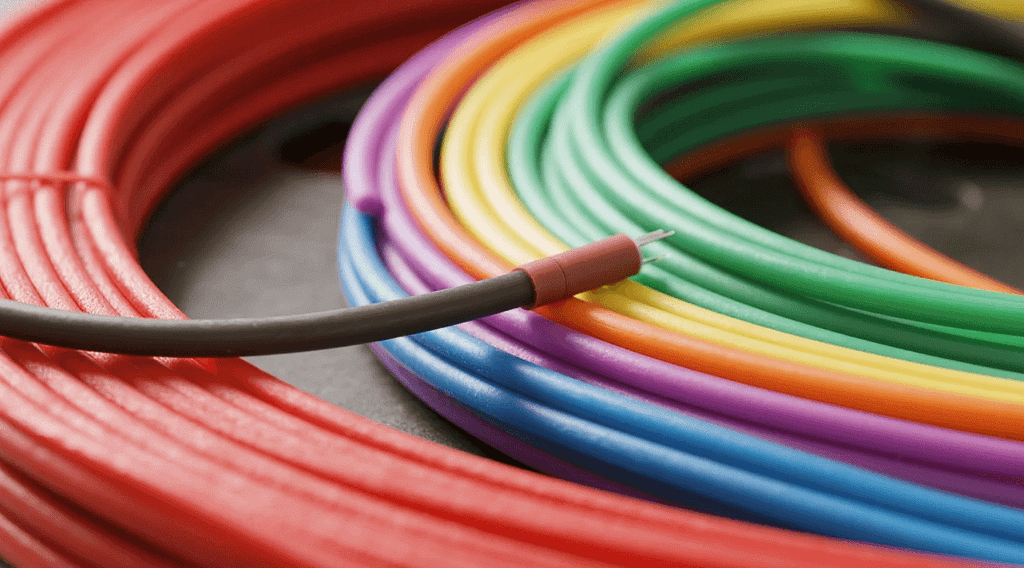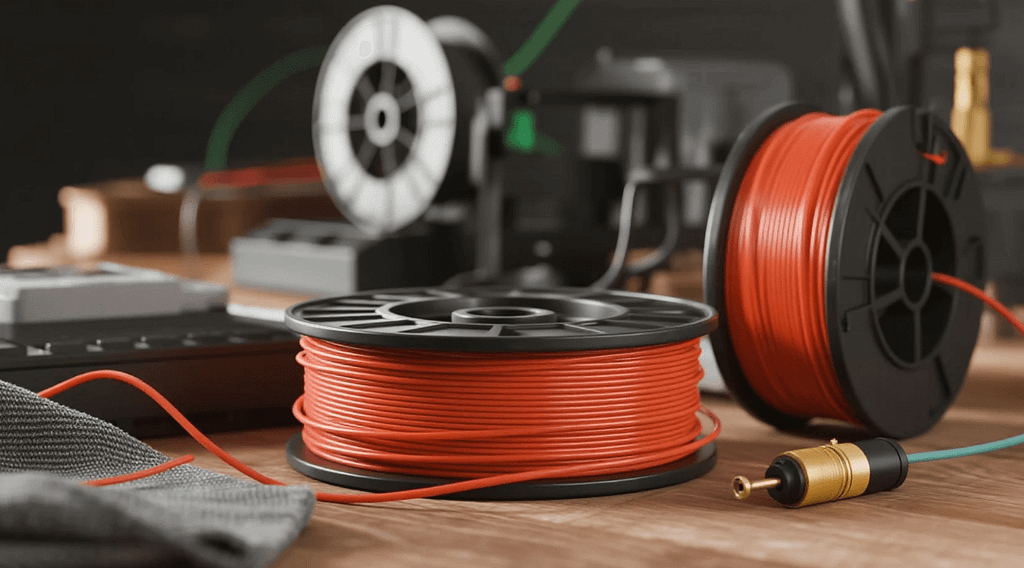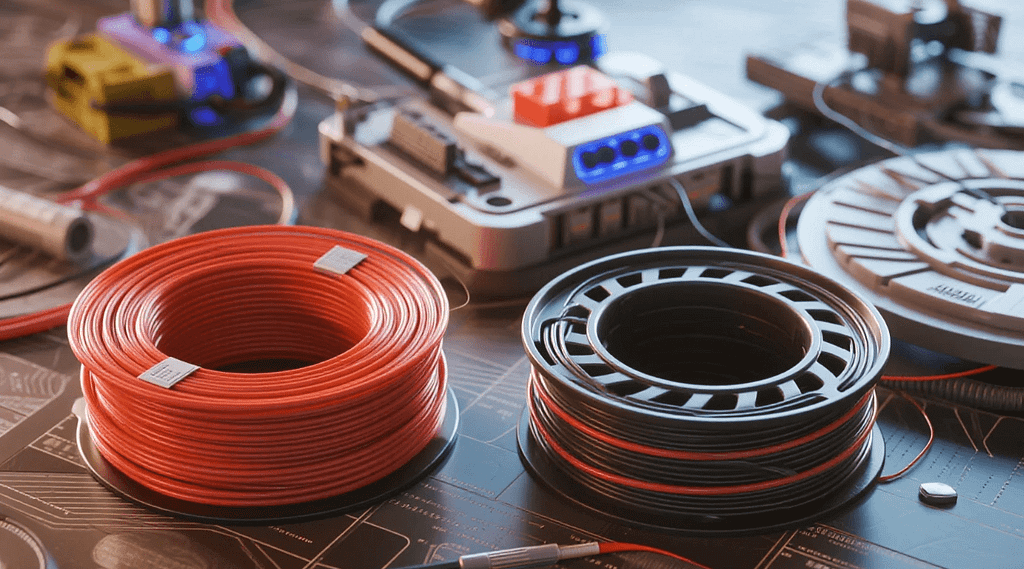The world of 3D printing has revolutionized rapid prototyping and manufacturing, making intricate designs a tangible reality. At the core of this transformation lies the humble yet incredibly diverse 3D print filament. This essential material, fed into Fused Deposition Modeling (FDM) 3D printers, dictates not only the physical properties of the printed object but also its aesthetic appeal and functional performance. For businesses that rely on precision industrial model services, understanding the nuances of different types of 3D print filament is crucial. This article delves into the characteristics of popular filaments, their ideal applications, and how selecting the right material can significantly enhance the value and utility of industrial models.
What is 3D Print Filament?
3D print filament is the thermoplastic feedstock used in FDM 3D printers. It comes in a long, continuous strand, typically wound onto a spool. The printer’s extruder heats this filament to its melting point, then deposits it layer by layer onto the print bed, gradually building the desired three-dimensional object. The quality, composition, and properties of the 3D print filament directly influence the strength, flexibility, detail, and surface finish of the final printed part.

Understanding Filament Properties
The vast array of 3D print filament types each possesses a unique set of properties, making them suitable for different applications in industrial modeling.
Standard Filaments: Versatility and Ease of Use
Certain filaments are popular for their balance of ease of use, cost-effectiveness, and adequate mechanical properties for general prototyping.
- PLA (Polylactic Acid): This biodegradable plastic is derived from renewable resources like corn starch. PLA is known for its ease of printing, low warping, and often vibrant colors. For industrial models, PLA is excellent for initial conceptual models, rapid iterations, and aesthetic prototypes where high strength or temperature resistance are not primary concerns. Its smooth finish can provide a good visual representation of a design.
- ABS (Acrylonitrile Butadiene Styrene): A durable, impact-resistant thermoplastic, ABS is widely used in consumer products. It offers good strength and toughness but can be more challenging to print due to warping issues, often requiring a heated print bed and enclosed printer. For industrial models requiring higher durability, snap-fit components, or post-processing like sanding and painting, ABS is a strong contender.
- PETG (Polyethylene Terephthalate Glycol-modified): PETG blends the ease of printing of PLA with the strength and durability of ABS. It offers good layer adhesion, chemical resistance, and is less prone to warping than ABS. This makes PETG a versatile 3D print filament choice for functional prototypes and industrial models that need a balance of strength, clarity (some variants are transparent), and resistance to moisture or chemicals.
Engineering Filaments: Strength and Performance
For industrial models that require specific mechanical properties or need to withstand challenging environments, engineering-grade filaments provide enhanced performance.
- Nylon (Polyamide): Nylon is renowned for its exceptional strength, flexibility, and abrasion resistance. It’s often used for functional parts like gears, hinges, and prototypes that require high durability. For industrial models that will undergo stress testing or need to simulate flexible components, nylon 3D print filament is an excellent choice.
- Polycarbonate (PC): PC is one of the strongest and most rigid 3D printing materials, known for its high impact resistance and temperature resistance. It’s also often transparent. Industrial models that simulate structural components, protective housings, or parts exposed to high temperatures benefit from PC’s robust properties.
- TPU (Thermoplastic Polyurethane) / TPE (Thermoplastic Elastomer): These flexible filaments are ideal for creating parts that require rubber-like elasticity, such as gaskets, seals, flexible connectors, or ergonomic grips. For industrial models demonstrating movable parts or providing a tactile experience, TPU 3D print filament is indispensable.
Specialty Filaments: Aesthetics and Advanced Functionality
Beyond standard and engineering plastics, a range of specialty 3D print filament options cater to unique aesthetic or functional requirements.
- Composite Filaments (Carbon Fiber, Glass Fiber Infused): These filaments incorporate chopped carbon or glass fibers to significantly increase strength, stiffness, and heat resistance while reducing weight. They are excellent for industrial models requiring high strength-to-weight ratios or mimicking parts from advanced composite materials.
- Wood-Filled Filaments: Blended with wood fibers, these filaments produce prints with a wood-like appearance and texture, and they can often be sanded and stained. While not for structural models, they are great for aesthetic prototypes or architectural models.
- Metal-Filled Filaments: Containing fine metal powders, these filaments allow for prints that look and feel like metal, and some can even be polished. They are primarily for aesthetic models or decorative industrial prototypes, not for structural metal parts.
3D Print Filament in Precision Industrial Model Services

For businesses providing or utilizing precision industrial model services, the choice of 3D print filament is a strategic decision that directly impacts the quality, functionality, and perceived value of the prototype.
Rapid Prototyping and Design Iteration
The ability to quickly print multiple iterations of a design is a cornerstone of agile product development. Different 3D print filament types allow service providers to rapidly create models for various stages of the design process. An initial concept might be printed in economical PLA, while a functional prototype for testing could utilize strong Nylon or PETG. This rapid iteration, enabled by filament versatility, significantly shortens the design cycle and reduces time to market.
Validating Form, Fit, and Function
Precision industrial models often serve to validate a product’s form (aesthetics and shape), fit (how components assemble), and function (how the part performs its intended role). Selecting the appropriate 3D print filament ensures that the model accurately represents these aspects. For example, a model of an enclosure needs a filament that accurately reproduces its dimensions and surface texture for aesthetic review. A model with interlocking parts requires a filament that provides the necessary dimensional accuracy and strength for proper assembly and function.
Enhancing Visual and Tactile Experience
For marketing, presentations, or user experience testing, the visual and tactile qualities of an industrial model are paramount. Specialty 3D print filament options can mimic the look and feel of final production materials, providing a more immersive and realistic experience. A model printed with metal-filled filament might convey a premium feel, while a flexible TPU component can demonstrate a product’s ergonomic benefits. This attention to detail elevates the perceived quality of the prototype.
Cost-Effectiveness for Early-Stage Development
Compared to traditional manufacturing methods, 3D printing with filament is often more cost-effective for producing low-volume, highly customized industrial models. This is particularly true for early-stage development where design changes are frequent. The diverse range of filament prices also allows service providers to offer cost-optimized solutions based on the specific requirements of each model.
Best Practices for Using 3D Print Filament
To maximize the benefits of 3D print filament in industrial modeling, consider these best practices:
Proper Filament Storage
Moisture absorption can significantly degrade filament quality, leading to poor print results (e.g., bubbling, stringing, weakened layers). Storing 3D print filament in a dry, airtight environment, often with desiccant packs, is crucial for maintaining its optimal properties.
Optimized Printer Settings
Each type of 3D print filament has specific temperature requirements for extrusion and print bed, as well as ideal print speeds and cooling settings. Precision industrial model services carefully calibrate these settings to achieve the best possible print quality, dimensional accuracy, and surface finish for the chosen material.
Post-Processing Techniques
While many filaments produce good prints directly, post-processing techniques like sanding, priming, painting, or vapor smoothing (for ABS) can further enhance the aesthetic and functional qualities of industrial models. This expertise adds significant value to the final product.
Understanding Material Limitations
No single 3D print filament is perfect for every application. Understanding the limitations of each material—such as heat deflection temperature, UV resistance, or chemical compatibility—is essential to ensure the printed model performs as expected in its intended environment.
The Future of 3D Print Filament and Industrial Models
The landscape of 3D print filament is constantly evolving, with ongoing research and development bringing new materials to market. We can anticipate advancements in high-performance polymers, smart filaments with embedded functionalities (e.g., conductive, color-changing), and even more sustainable, eco-friendly options derived from recycled or bio-based sources. For precision industrial models, this means an ever-expanding palette of materials to meet the most demanding specifications, enabling even more realistic and functional prototypes. The continuous innovation in 3D print filament technology will further solidify 3D printing’s role as an indispensable tool in advanced product development.
Conclusion
3D print filament is the lifeblood of FDM additive manufacturing, offering an incredible range of materials to meet the diverse needs of industrial modeling. For businesses seeking precision industrial model services, a deep understanding of different filament types empowers them to make informed choices that directly impact the quality, functionality, and cost-effectiveness of their prototypes. From rapid concept validation with PLA to functional testing with engineering-grade plastics and aesthetic enhancement with specialty filaments, the right 3D print filament transforms digital designs into tangible, high-value models. As filament technology continues to advance, so too will the possibilities for innovation in product design and development.
FAQ
Q1: What is the most common type of 3D print filament for general prototyping?
A1: PLA (Polylactic Acid) is widely considered the most common and easiest-to-use 3D print filament for general prototyping due to its low warping and good print quality.
Q2: Which 3D print filament is best for strong, functional industrial models?
A2: For strong, functional industrial models, PETG, ABS, Nylon, and Polycarbonate (PC) are excellent choices, offering varying degrees of strength, impact resistance, and temperature resistance.
Q3: Can 3D print filament create flexible industrial models?
A3: Yes, TPU (Thermoplastic Polyurethane) et TPE (Thermoplastic Elastomer) are types of 3D print filament specifically designed to create flexible, rubber-like industrial models.
Q4: How does filament storage affect print quality?
A4: Proper filament storage, especially keeping it dry and airtight, is crucial. Moisture absorption can lead to bubbles, stringing, and weakened layers during printing, significantly reducing print quality and part strength.
Q5: What are composite 3D print filaments used for in industrial models?
A5: Composite 3D print filament (like carbon fiber or glass fiber infused) is used for industrial models that require significantly increased strength, stiffness, and heat resistance, often while also being lighter.
Q6: Is 3D printing with filament always more cost-effective than other prototyping methods?
Q6: For low-volume, highly customized, or geometrically complex prototypes and industrial models, 3D printing with 3D print filament is often very cost-effective compared to traditional manufacturing methods that require expensive tooling.
Q7: Can a 3D print filament be post-processed to improve its appearance?
Q7: Yes, many 3D print filament types can be post-processed using techniques like sanding, priming, painting, or vapor smoothing (especially for ABS) to improve their surface finish and aesthetic appeal.
